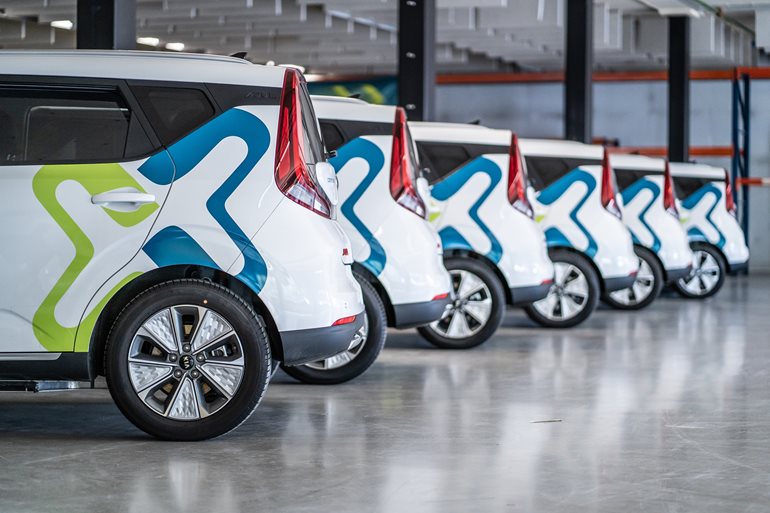More and more passenger transport companies are switching to electric driving. Often of their own accord and sometimes because clients request it. According to Wouter Hulskotte, Manager KAM and Vehicle Fleet at Connexxion Taxi Services, the radius and driving behaviour of drivers are essential in this respect. We asked him how they use the Cabman Vehicle Data module at Connexxion Taxi Services.
At Connexxion Taxi Services, more than five hundred electric vehicles are equipped with modules from the Cabman Smart Vehicle (formerly Cabman Eco) product series. These include the Cabman Driving Style Analysis and the Cabman Vehicle Data module. ”We are driving more and more electric and this brings challenges,” Hulskotte says. ”Although the vehicles’ range is getting better and better, it remains limited for some vehicle segments, including wheelchair buses. Needless to say, we already want to maximise the range of a vehicle in service. Therefore, we use the data from the CAN interface to monitor this.”
The way it works
To ensure that the correct data is fed back to the agenda package, Connexxion Taxi Services uses a CAN interface. ”We receive signals from the CAN interface about things like range, charge status and whether a vehicle is charging,” explains Hulskotte. ”This data is then communicated to our calendar packages. In our case we use two scheduling packages: Taxsys for on-demand transport and RBS2 for group transport. The link with Taxsys was implemented fairly quickly, while the link with RBS2 has just been completed and will go live soon.”
Display via the dispatch software
The data is easy to view via Taxsys and RBS. ”We can easily see the range via the mutation screen and the overview of released vehicles,” says Hulskotte. ”The main screen, better known as the calendar, also shows the vehicle when the range is less than twenty percent.”
Why?
Connexxion Taxi Services chose to combine the Cabman Smart Vehicle modules for a number of reasons. ”Firstly, it is important for us to have a picture of our drivers’ driving behaviour. We want our drivers to get passengers from A to B in a safe and pleasant way. Driving behaviour also has a strong influence on maintenance costs and the vehicle’s range. If a driver accelerates and drives fast, it affects the remaining mileage.”
More sustainable driving
Driving style analysis provides insight into the top 10 best and worst performing drivers through Cabman Data Studio. ”We use these top 10 for monitoring. We think it is important to take a long-term look at which aspects of driving behaviour have the greatest impact on range and how we can ensure that drivers drive safely and economically,”says Hulskotte.
The drivers are also pleased with the driving style module. ”As drivers, we also have an insight into the results of the driving style analysis,” explains one of the Connexxion drivers. ”The module makes electric driving a challenge. I try to increase the range every shift and get the most out of my driving performance.”
Being a good employer
The smart module also helps the company avoid discussions between drivers and planners. As part of being a good employer, we believe it is important to adhere to company agreements and the prescribed driving and rest periods,” says Hulskotte. ”It is inherent in taxi that the working hours are sometimes exceeded. With the Cabman vehicle data module, we avoid the discussion of whether or not we can make a trip before the break or the end of the duty period.”
Recommendation
Hulskotte recommends that every company starts with the module. ”I think that companies with a large fleet of electric vehicles in particular will benefit from it. Especially in combination with our plan packages, we are very enthusiastic. Almost all communication can take place via the on-board computer, which takes the pressure off the control centre. Especially during the peak times of the day, it is nice that the dispatcher has the right insight into the trip to be made in combination with the remaining range of the vehicle.”
